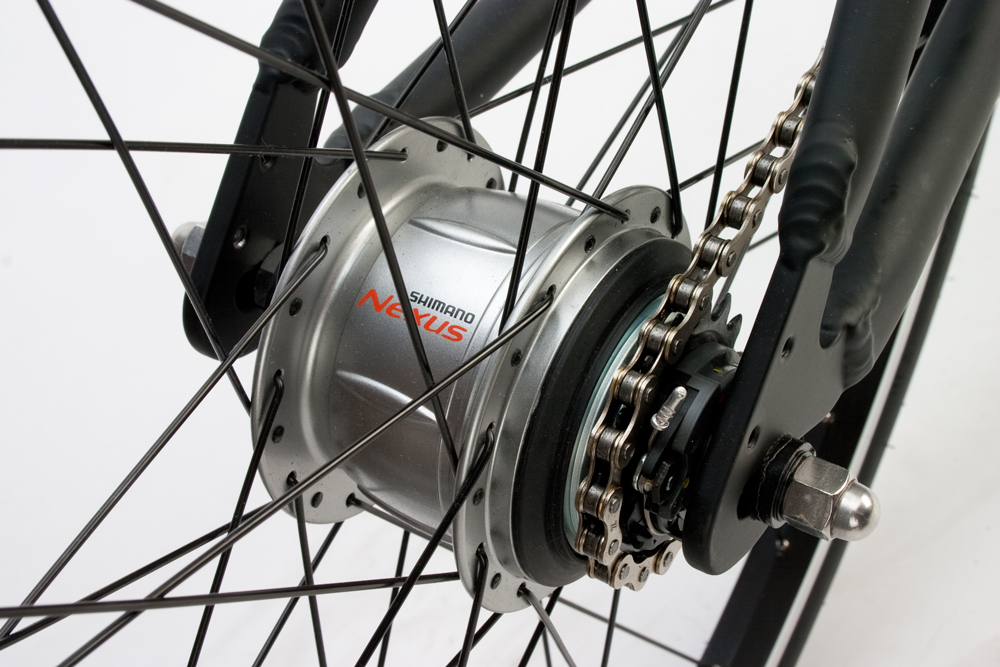Part 4 in the “CX First Timer Custom Build Experiment”
What’s in a gear? When doing a build it’s a very important question to ask. Just what is this bicycle going to be doing, where is it going? My regular bicycle is a fixed gear – it is used for urban transport and for the terrain in Boston and the riding I tend to do on a daily basis, it works well. But for cyclocross we need a little bit more.
You might be saying, I’m not racing cyclocross, nor do I intend to – however, there is still a lot of value that can be derived from cyclocross, even if you’re commuting. If you need a bicycle that is ready for anything, cyclocross is just the place to look. The courses are covered in mud, debris, puddles, uneven terrain, and all sorts of hindrances to progress. A bicycle that is equipped to survive that makes for one strong commuter build.
What’s a gear for anyway?
If you live in a place that is mostly flat, gears may not be something you think about often. I’ve been riding primarily fixed-gear or single speed for years because the places I have lived and cycled have been flat. Hills happen – and in many places they happen more often than not. Enter the gear system. This allows you to maintain your cadence (pedaling speed) over varying terrain without necessitating injury, and conserving energy over longer distances.
On a cyclocross course one will encounter various obstacles and terrain variations, hills and dips. Gears allow one to transverse these changes while maintaining sufficient speed and without expending too much effort too quickly. These same values cross over to commuting. You want to be able to move from point A to point B, not be hampered by obstacles, terrain changes (e.g. hills and pot-holes), while conserving energy – especially if wearing office attire.
How many do I need?
There are varying philosophies on how many gears are best. For instance, there are mountain bikes on the market with upwards of 30 speeds, engineered with the philosophy that more gearing options will provide finesse over any possible terrain one could encounter on a bike ride. A drawback, which is a deal breaker for some, is the added weight all these options carry along as a side effect. The more possible gear combinations available, the more sprockets are on a cassette and inevitably, the more weight you are pedaling around with. In some situations this level of gearing is preferable, but for cyclocross or commuting that can be overkill.
You want as many gears as you need to have options for varying terrain, without having so many that you’re hauling pounds of equipment you will not need or so few you’re expending valuable energy to make up for lack of equipment. In cyclocross you are often picking up your bicycle and running with it over obstacles; when commuting with your folding bike you’re carrying it in and out of the train, home, car, or office. We need something we can carry easily. For this build 10 speeds should be enough – sufficient options so I’m not left hanging, but not so many that I’m pulling extra pounds. This breaks down handily into two chain-ring sprockets in the front, handled by the front derailleur, and five sprockets in the back for the rear derailleur. To illustrate a highpower set up, here is the 30-speed Shimano Tiagra set up that comes on a FIT:
What if I’m not on a racecourse?
Even if one is not taking to the racecourse, the considerations for gearing we’ve discussed apply. Another helpful option for commuting, which would not be ideal on the racecourse is an internal hub.
This oversized-looking hub, called an internally geared hub, is another gearing option. An internal hub does all the things a derailleur set-up does, but is contained within a special hub. This is ideal for commuting because these hubs require little maintenance, and in the winter there are less parts to rust and wear with snow and road salt. Internal hubs are not available with quite as many gearing options as derailleur set ups and require a different shifting technique. You can shift when not pedaling, or even at a stop – perfect for commuting; you’re always ready even if you’re at a redlight and forgot to downshift when you stopped. Derailleur set-ups we’ve mentioned previously require you to pedal while shifting. (We’ve covered the virtues of internal hubs here before.)
No matter where you and your bike go together, the robust functionality of a cyclocross build can help guide us in putting together a build that will be useful across the subsections of cycling, seasons, terrains, and destinations. Cyclocross informs the commuter build to be more versatile.




